1491
Hero Member
- #1
Thread Owner
Reminisce about the moment your research was rewarded. Let's see your reward!
Hey gang,
Earlier this year, I was reading some local southern CA history when I came across references to adobe home sites in the area. Most of these homes were long-since vanished, due to the elements, vandals, etc. Those that were still visible were obvious historic landmarks and were thus off-limits to detecting. My research led me to a rural area by a stream where an adobe had been built around 1850. Finding the site was the most fun part - I left my detector at home, put on the hiking boots, filled a day pack with water and snacks and went on my way. My first hike unknowingly got me to within 1/3 of a mile of the site I would eventually find. It was a long, hot slog through poison oak and sage scrub and I could tell from the stories I had read and my surroundings that I must be close. I didn't have any historic maps of the site, but several accounts of a life lived in the area. A little more reading after that first hike was the key. I started the hike from a different direction and found the site almost immediately. The remains of long-dead cypress trees (which are not native to the area) was the confirmation that I had arrived at the site. A couple of minutes later, I located the house by finding the melted remains of adobe bricks, even a 90-degree corner of a room or the outer wall. This time, I had my detector with me. On that first visit, I found a few square nails, a corset snap, clothing rivets, and part of a pewter or lead button. Not too much to write home about. On my third visit to the site, I was about an hour into swinging my F-75 without much luck when I got a nice, clear signal that ID'd in the 70s. At this point, I hadn't even found a modern coin at the site (good sign). But, I had found a few beer cans that rang up in the mid-70s range (bad sign). This target was more discrete and crisp than a beer can - a small target! I got a little excited because I thought maybe I'd pull an early wheat penny or a silver coin out of here. I dug about 6 inches, flipped a plug of dirt, and saw what looked like a dirty button mushroom. It wasn't a mushroom, but it was a button! Flipped it over, saw a rider on horseback and the letters "P.O.D". A Post Office Department button! This design was used between the years 1873 and 1892, when it was replaced by a more modern button, depicting a mail carrier on foot with a letter in his outstretched hand. I've been detecting for about a year now and finding this site has been the highlight for me, even though I've only found this one "keeper" to date. That's my research reward story, what's yours? - Jim
Hey gang,
Earlier this year, I was reading some local southern CA history when I came across references to adobe home sites in the area. Most of these homes were long-since vanished, due to the elements, vandals, etc. Those that were still visible were obvious historic landmarks and were thus off-limits to detecting. My research led me to a rural area by a stream where an adobe had been built around 1850. Finding the site was the most fun part - I left my detector at home, put on the hiking boots, filled a day pack with water and snacks and went on my way. My first hike unknowingly got me to within 1/3 of a mile of the site I would eventually find. It was a long, hot slog through poison oak and sage scrub and I could tell from the stories I had read and my surroundings that I must be close. I didn't have any historic maps of the site, but several accounts of a life lived in the area. A little more reading after that first hike was the key. I started the hike from a different direction and found the site almost immediately. The remains of long-dead cypress trees (which are not native to the area) was the confirmation that I had arrived at the site. A couple of minutes later, I located the house by finding the melted remains of adobe bricks, even a 90-degree corner of a room or the outer wall. This time, I had my detector with me. On that first visit, I found a few square nails, a corset snap, clothing rivets, and part of a pewter or lead button. Not too much to write home about. On my third visit to the site, I was about an hour into swinging my F-75 without much luck when I got a nice, clear signal that ID'd in the 70s. At this point, I hadn't even found a modern coin at the site (good sign). But, I had found a few beer cans that rang up in the mid-70s range (bad sign). This target was more discrete and crisp than a beer can - a small target! I got a little excited because I thought maybe I'd pull an early wheat penny or a silver coin out of here. I dug about 6 inches, flipped a plug of dirt, and saw what looked like a dirty button mushroom. It wasn't a mushroom, but it was a button! Flipped it over, saw a rider on horseback and the letters "P.O.D". A Post Office Department button! This design was used between the years 1873 and 1892, when it was replaced by a more modern button, depicting a mail carrier on foot with a letter in his outstretched hand. I've been detecting for about a year now and finding this site has been the highlight for me, even though I've only found this one "keeper" to date. That's my research reward story, what's yours? - Jim
Attachments
-
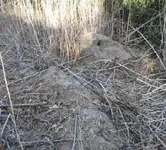 Adobe Kinzli Two.webp66.4 KB · Views: 247
Adobe Kinzli Two.webp66.4 KB · Views: 247 -
 Adobe Kinzli Four.webp45 KB · Views: 240
Adobe Kinzli Four.webp45 KB · Views: 240 -
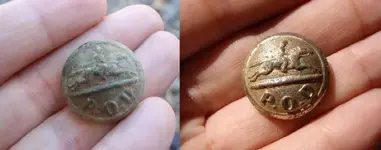 P.O.D button front.webp30.8 KB · Views: 245
P.O.D button front.webp30.8 KB · Views: 245 -
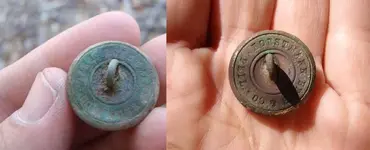 P.O.D button back.webp29.8 KB · Views: 239
P.O.D button back.webp29.8 KB · Views: 239 -
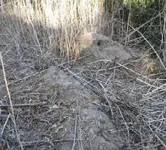 Adobe Kinzli Two.webp66.4 KB · Views: 235
Adobe Kinzli Two.webp66.4 KB · Views: 235 -
 Adobe Kinzli Four.webp45 KB · Views: 225
Adobe Kinzli Four.webp45 KB · Views: 225 -
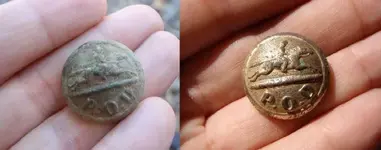 P.O.D button front.webp30.8 KB · Views: 224
P.O.D button front.webp30.8 KB · Views: 224 -
 P.O.D button back.webp29.8 KB · Views: 228
P.O.D button back.webp29.8 KB · Views: 228




 s*#t anybody got the new one?
s*#t anybody got the new one?